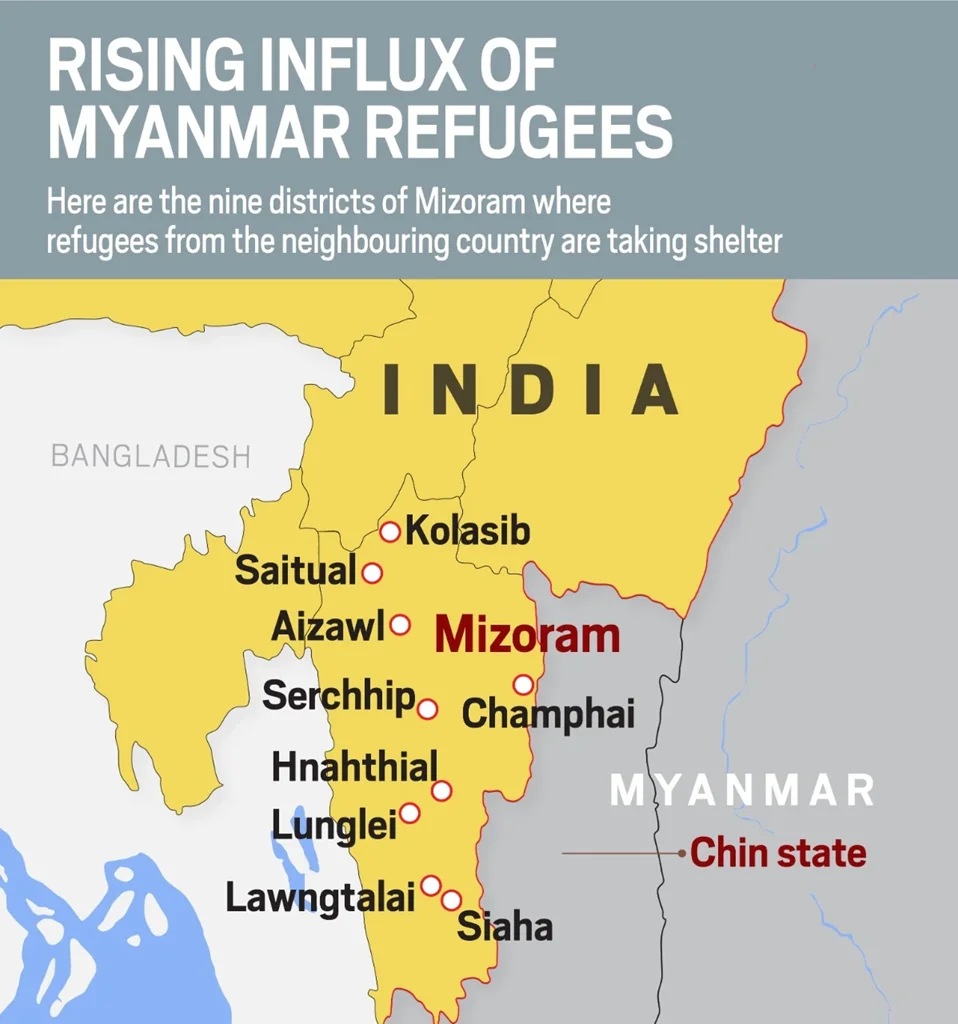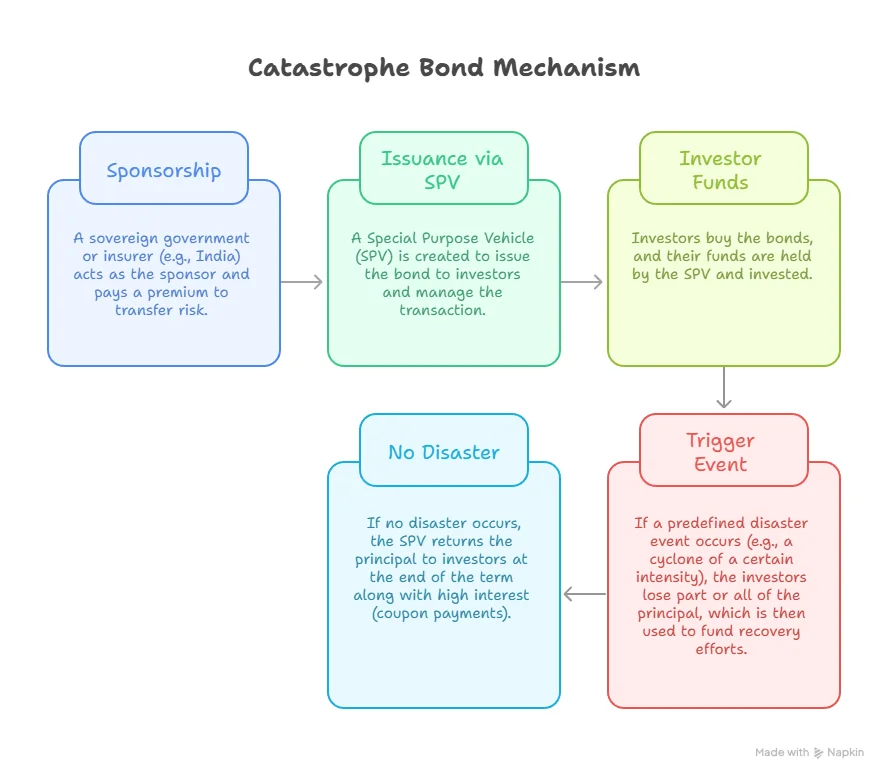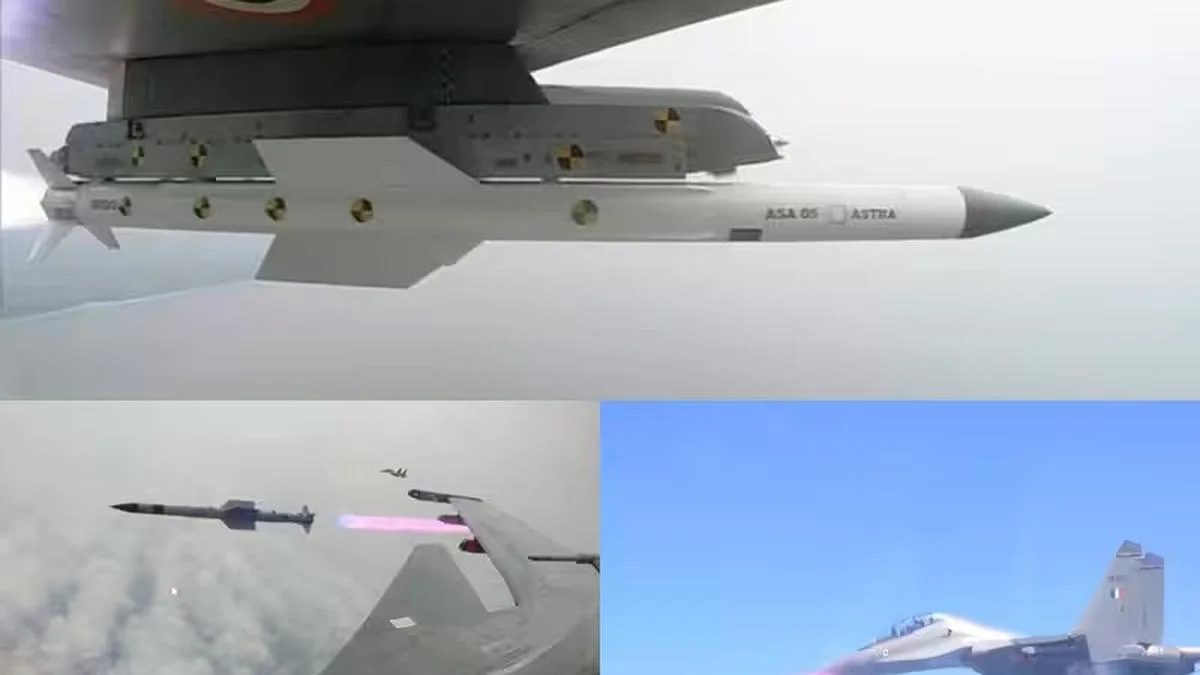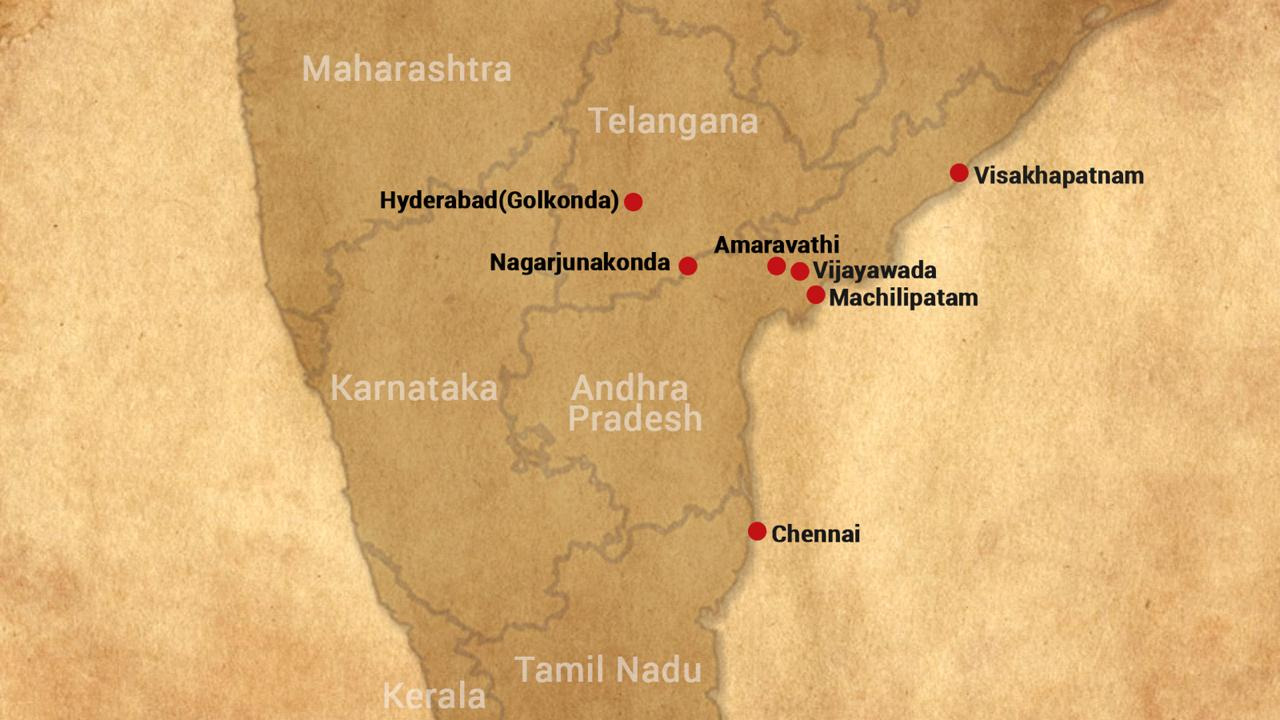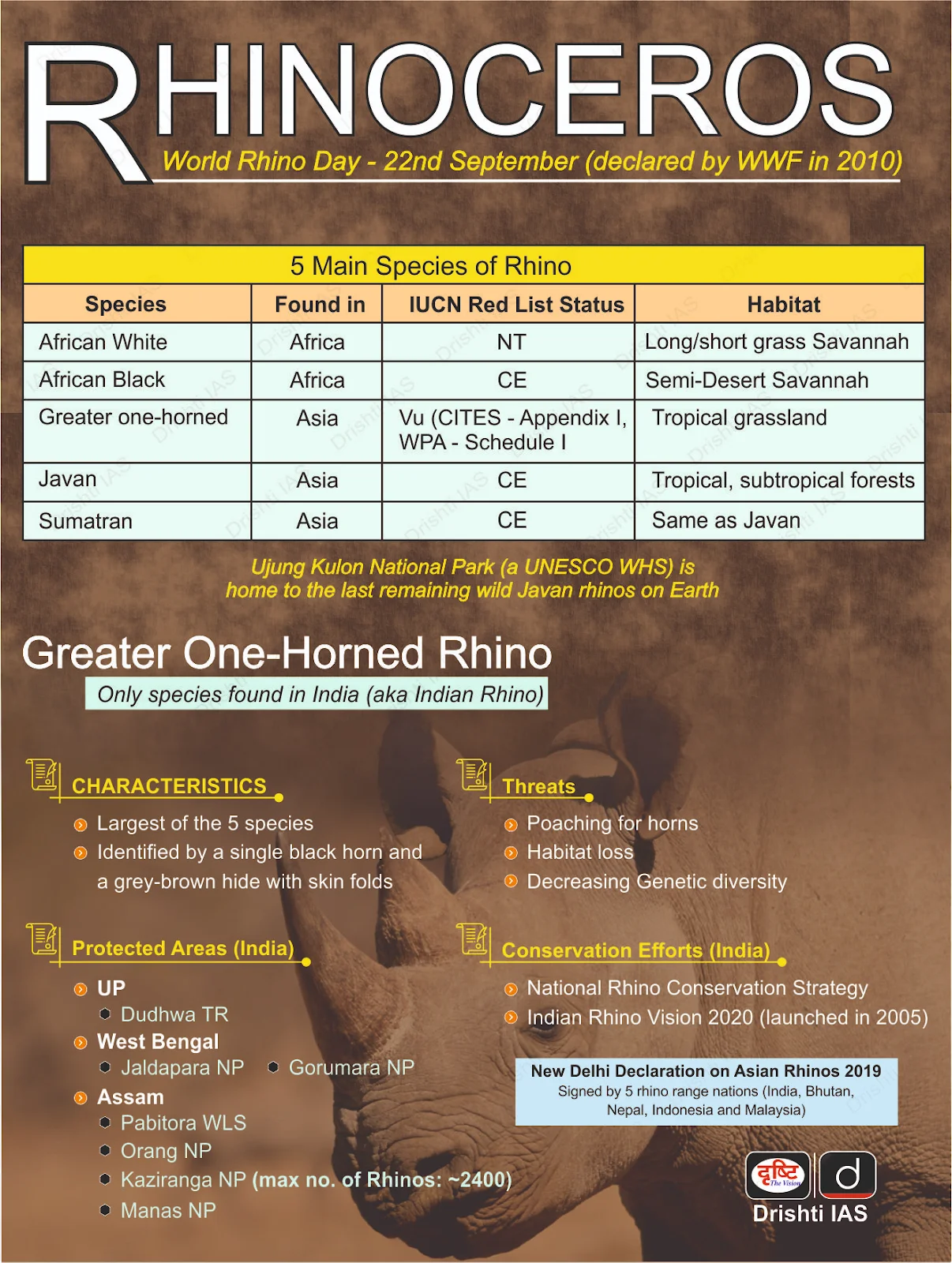Indian Economy
India’s Sluggish Corporate Investment
For Prelims: Index of Industrial Production, Gross Fixed Capital Formation, Capex, Make in India, Startup India, Foreign Direct Investment
For Mains: Factors affecting private investment in India, India’s investment climate
Why in News?
India’s corporate investment remains sluggish despite government support. The June 2025 Index of Industrial Production (IIP) growth fell to a nine-month low of 1.2%, highlighting weak industrial activity, raising concerns about India’s growth and employment prospects.
Why is Corporate Investment Sluggish in India?
- Weak Demand: Investment decisions are primarily driven by expected demand. Despite higher profits post-tax reforms (corporate tax cut from 30% to 22% in 2019), low consumer demand has disincentivized expansion.
- The Economic Survey 2024-25 noted that while corporate profits soared, hiring and wage growth remained low, and private sector Gross Fixed Capital Formation (GFCF) in machinery rose only 35% in four years. Without a revival in demand, profits alone are not an incentive for investment.
- The Reserve Bank of India (RBI) Monetary Policy Committee (MPC) reduced rates and eased liquidity to spur investment, but low demand has hurt business confidence. But without demand, firms avoid borrowing, fearing poor returns.
- Capacity underutilization discourages further investment as firms prefer to operate existing assets more efficiently.
- Lower Investment to GDP Ratio: Corporate investment to GDP ratio has been significantly lower in recent years. In FY2022-23, corporates invested 12% of GDP, compared to 16% during the growth surge years (2004-2008).
- This decline reflects reduced confidence in long-term growth prospects. This level of investment is inadequate for achieving India’s target of over 8% structural growth, which would require a 35% or more investment rate.
- Low Multiplier Effect of Government Capex: The government has stepped up infrastructure spending (Capex of Rs 11.21 lakh crore (3.1% of GDP) earmarked in FY2025-26) to boost growth and support recovery.
- Despite higher public spending, private investment remains sluggish due to long project timelines, high import content, and low job creation from machine-heavy infrastructure, limiting the consumption boost.
- Delayed Loan Disbursement: It can take two to three years for disbursement of loans, particularly for large-scale infrastructure projects.
- For example, credit to the infrastructure sector in November 2023 grew at only 2.1%, compared to 11.1% in November 2022.
- According to RBI data, loans to the roads sector in November 2023 grew by only 6.4%, compared to 14% the previous year.
- In contrast, personal loans grew 30.1% in 2023, indicating household demand but not industrial appetite.
- Global Trade Headwinds: Protectionist policies globally, including tariff regimes in key markets like the US, have weakened export-led investment opportunities.
Economic Theories of Investment and Profits
- In a pure capitalist economy (one without any State intervention or access to external markets), investment and profit are tightly linked, but which causes which is debated.
- According to economists like Tugan Baranovsky, Luxemburg, and Kalecki the relationship between profits and investment is crucial to understanding the investment cycle.
- Tugan Baranovsky’s View: Investment can drive its own demand. As long as investment in consumption and capital goods stays proportionate, the economy can keep growing, even without strong consumer demand.
- Luxemburg: While investment leads to profits, it doesn’t guarantee that firms will invest. Under capitalism, decisions are made individually, not collectively.
- In a slowdown, adding capacity makes no sense if existing factories are underused.
- Collective investment could revive the economy, but capitalism lacks such coordinated planning.
- Kalecki: Argued that investment drives profits, not the other way around. But firms invest only if they expect demand. Without external stimulus, the economy gets stuck in a cycle of low demand and low investment.
What are India’s Measures to Boost Investment?
- Make in India and Startup India to support manufacturing and innovation
- PM GatiShakti for integrated infrastructure and logistics
- National Industrial Corridor Programme (NICDP) to develop manufacturing zones
- Production Linked Incentive (PLI) Schemes to boost sector-specific output
- Ease of Doing Business (EoDB) reforms and compliance reduction
- National Single Window System (NSWS) for investor facilitation
- India Industrial Land Bank to provide land availability information
- Project Monitoring Group (PMG) to remove project implementation bottlenecks
- Over 90% of Foreign Direct Investment (FDI) inflows are under the automatic route, reducing red tape. Most sectors are open to 100% FDI, except those of strategic importance.
- Project Development Cells (PDCs) have been created in all key ministries to coordinate investment proposals and support investors.
What Should be the Policy Approach to Revive Corporate Investment Sustainably?
- Boost Aggregate Demand: Expansion of social sector spending, rural employment schemes (like MGNREGA), and targeted cash transfers can stimulate consumption.
- Public investment in labour-intensive sectors like housing and MSMEs could create jobs and raise household income; this will create a ripple effect for demand across sectors.
- Reform Factor Markets for Better Competitiveness: High land prices (price-to-income ratio (PTI) in urban areas around 11, far above the affordability benchmark of 5) raise production costs and hurt competitiveness.
- Transparent land supply and better land-use policies can lower costs, boost affordability, and attract investment.
- De-Risking Private Investment: Create long-term viability gap funding and risk-sharing models for greenfield investments in manufacturing and clean energy.
- Expand credit guarantee schemes (like Emergency Credit Line Guarantee Scheme (ECLGS)) for mid-size and growth-stage firms beyond MSMEs.
- Support Green and Digital Transition: Create green capex incentives for sectors adopting sustainable energy, circular economy models, and net-zero roadmaps.
- Link PLI schemes to employment and innovation, not just output, to create more inclusive growth.
- Create a Mission-Based Investment Strategy: Link industrial policy with national missions such as energy transition, defence indigenisation, and digital infrastructure to attract long-term investment.
- Encourage the development and export of niche, innovative products (such as Unmanned aerial vehicles, Electric Vehicle components, defence-grade semiconductors) that meet global demand and help position India as a competitive player in emerging sectors.
- Enhance Corporate Confidence: Maintain inflation within the RBI’s comfort zone to reduce interest rate volatility. Stick to the fiscal glide path with greater transparency in off-budget borrowings to build credibility.
- Fast-track infrastructure project clearances to reduce delays and attract long-term investment.
Conclusion
Sustainable corporate investment revival cannot be engineered through tax cuts and monetary easing alone. It requires a holistic strategy combining demand generation, structural reform, financial deepening, and institutional trust. India’s demographic advantage and geopolitical repositioning offer a unique opportunity to recalibrate its investment framework for a more resilient and inclusive economy.
|
Drishti Mains Question: Why has private corporate investment remained sluggish in India despite significant tax reforms and public capital expenditure? Suggest policy measures to reverse this trend. |
UPSC Civil Services Examination, Previous Year Question (PYQ)
Prelims:
Q. A decrease in tax to GDP ratio of a country indicates which of the following? (2015)
- Slowing economic growth rate
- Less equitable distribution of national income
Select the correct answer using the code given below:
(a) 1 only
(b) 2 only
(c) Both 1 and 2
(d) Neither 1 nor 2
Ans: (a)
Mains:
Q.1 “Industrial growth rate has lagged behind in the overall growth of Gross-Domestic-Product(GDP) in the post-reform period” Give reasons. How far the recent changes in Industrial Policy capable of increasing the industrial growth rate? (2017)


Governance
Mizoram’s Refugees Crisis
For Prelims: Free Movement Regime , 1951 UN Refugee Convention, United Nations High Commissioner for Refugees, Smart Fencing
For Mains: Refugee Policy and Legal Framework in India, India-Myanmar Border and Free Movement Regime, Role of States in Refugee Management
Why in News?
Mizoram has been grappling with the challenge of managing a growing refugee crisis since Myanmar’s 2021 military coup, providing shelter to thousands from Myanmar, Bangladesh, and Manipur.
- In early 2025 around 4,000 refugees from Myanmar’s Chin State entered Mizoram after armed clashes, further straining the State’s already fragile humanitarian situation.
How is Mizoram Managing the Influx of Refugees?
- Ethnic Ties and Humanitarian Grounds: Cross-border movement has long been common in Mizoram due to ethnic ties, even before the Free Movement Regime (FMR) was formalised in 1968.
- Mizoram’s dominant Mizo community shares close ethnic, cultural, and familial bonds with the Chin of Myanmar, the Bawm of Bangladesh, and the Kuki-Zo of Manipur, all belonging to the larger Zo ethnic group.
- This shared identity has led to a sense of solidarity, with Mizos extending support to the refugees, particularly those from Myanmar.
- Community Support: Various organizations, including the Young Mizo Association (YMA), church groups, and local individuals, have been providing food, shelter, and basic needs to the refugees.
- The state’s civilian response has been one of compassion, despite the mounting strain on local resources.
- Mizoram Government's Position: The Mizoram government, citing ethnic and humanitarian reasons, has refrained from deporting refugees.
- However, growing local pressure has led some villages to impose restrictions on their movement and trade, citing concerns over legal violations and border security.
- Limited Assistance from the Centre: Initially hesitant, the Centre has provided Rs 8 crore in relief funds to assist Mizoram in managing the crisis.
- However, local authorities have expressed dissatisfaction with the support, as it is seen as inadequate in addressing the growing challenges.
What is the Legal Framework Governing Refugees in Mizoram?
- Refugee Definition under International Law: As per the 1951 UN Refugee Convention and its 1967 Protocol, a refugee is someone who is outside their country of origin and is unable or unwilling to return due to a well-founded fear of persecution. This fear may be based on their race, religion, nationality, membership of a particular social group, or political opinion.
- An asylum seeker is one whose claim for refugee status is yet to be adjudicated.
- Refugees are not illegal migrants, as they flee persecution, whereas illegal migrants voluntarily cross borders in search of better economic opportunities.
- India's Position: India is not a signatory to the 1951 Refugee Convention or its 1967 Protocol, and it does not have a national refugee law.
- Refugees in India are governed primarily under the Foreigners Act, 1946, and are often dealt with through laws related to immigration and national security like the Indian Passport Act, 1920, the Repatriation of Prisoners Act, 2003, and relevant rules such as the Passport (Entry into India) Rules, 1950.
- FMR and Border Control: The FMR is a 1968 bilateral arrangement between India and Myanmar that allows hill tribe members to cross the border. It aims to maintain cross-border cultural ties, enable trade, and support India’s Act East Policy.
- Originally permitting 40 km of travel, the limit was reduced to 10 km from the border. Assam Rifles guard the Myanmar border, while State officials issue border passes under the FMR.
- Border residents can travel without a visa or passport but require a QR code-enabled border pass. Biometric data is recorded and uploaded to a centralized portal to check against a negative list.
- Despite its goals, concerns over security, smuggling, and migration have led to tighter controls.
- UNHCR: Refugees registered with the United Nations High Commissioner for Refugees (UNHCR), get limited protection and services but lack government-issued documents.
- As a result, they can’t access welfare schemes or open bank accounts, leaving them excluded.
Note: The Mizoram (Maintenance of Household Registers) Bill, 2019 currently under consideration, aims to identify and track foreign nationals residing in the state. It seeks to help distinguish between Mizos, refugees, and illegal immigrants.
What Measures are Needed to Manage Refugee and Asylum Seeker Issues Effectively?
- Legal Reform: Enact a comprehensive National Refugee Law distinguishing refugees from illegal immigrants. Ensure rights to fair hearings and protection under humanitarian law.
- The Mizoram Maintenance of Household Registers Bill, 2019 if given Presidential assent, could be a model for local-level identification and regulation.
- Institutional Strengthening: Empower state-level Foreigners' Registration Officers (FROs) with clear guidelines and training. Enhance coordination between the Ministry of Home Affairs and the UNHCR for timely refugee status adjudication.
- Establish a dedicated inter-ministerial refugee coordination task force involving the Ministry of Home Affairs, Ministry of External Affairs, and the Mizoram government to streamline refugee response.
- Community Integration: Promote inclusive local development plans and access to basic services for genuine refugees.
- Protect vulnerable groups like women and children from trafficking and exploitation.
- Strengthen Infrastructure and Camp Management: Refugees are currently housed in ad hoc shelters with limited access to sanitation, healthcare, and education.
- Establish temporary reception centres with support from the National Disaster Management Authority (NDMA) and UNHCR. Create a refugee data management system to track inflow and service needs.
- Border Management: Use Smart Fencing technology to monitor sensitive borders while ensuring humanitarian corridors for asylum seekers.
- Strengthen local policing and community engagement to detect criminal activities without ethnic profiling.
|
Drishti Mains Question: "Ethnic solidarity should not come at the cost of national security." In the context of Mizoram’s refugee response, critically examine this statement. |
UPSC Civil Services Examination, Previous Year Question:
Q. Consider the following pairs: (2016)
Community sometimes In the affairs of mentioned in the news
|
1. Kurd |
Bangladesh |
|
2. Madhesi |
Nepal |
|
3. Rohingya |
Myanmar |
Which of the pairs given above is/are correctly matched?
(a) 1 and 2
(b) 2 only
(c) 2 and 3
(d) 3 only
Ans- (c)
Mains
Q. “Refugees should not be turned back to the country where they would face persecution or human right violation.” Examine the statement with reference to the ethical dimension being violated by the nation claiming to be democratic with open society. (2021)


Important Facts For Prelims
Catastrophe Bonds for Natural Disasters
Why in News?
India’s limited disaster insurance coverage increases financial vulnerability during natural disasters. In light of rising climate-induced disasters, Catastrophe Bonds (Cat Bonds) present a strategic option for enhancing disaster risk financing and resilience.
Bonds
- Bonds are debt instruments where an investor lends money to a government, corporation, or other entity for a fixed period.
- In return, the investor receives regular interest payments (called coupons) and gets back the principal amount at the end of the bond’s term (maturity).
What are Catastrophe Bonds?
- About: Catastrophe Bonds are insurance-linked securities that transfer the financial risk of natural disasters (earthquakes, cyclones, or floods) from governments or insurers to private investors through global financial markets.
- These hybrid instruments combine insurance and bond features, raising quick funds for post-disaster relief.
- Investors earn high returns for bearing the risk but may lose their investment if a major disaster occurs.
- Primarily purchased by institutional investors like pension funds and hedge funds due to their complexity and high investment thresholds.
- Cat-bonds are now increasingly attracting retail investors, especially after becoming the best-performing hedge fund strategy in 2023.
- Working Mechanism:
- Key Features:
- High Returns: Investors are compensated with higher returns than regular government or corporate bonds, due to the risk of losing the principal.
- Diversification: Cat bond risks are not correlated with financial market movements, offering diversification.
- Quick Capital Mobilization: Enables faster payouts post-disaster, reducing dependence on delayed aid or budget reallocation.
- Multi-Year Coverage: Can provide multi-year disaster protection for governments.
- Fiscal Buffer: Reduces pressure on central and state government finances after disasters.
- Investor Vigilance: Encourages improved disaster preparedness and investment in risk mitigation technologies.
- Global Trends: Since their inception in the late 1990s, over USD 180 billion in Cat Bonds have been issued globally, with around USD 50 billion currently active.
What is the Significance of Catastrophe Bonds for India?
- India, being highly vulnerable to climate-related disasters such as cyclones, floods, and earthquakes, faces rising challenges in disaster risk financing as insurers raise premiums or exit the market.
- Since FY 2021-22, the government has been allocating USD 1.8 billion annually for disaster mitigation, making India well-positioned to explore Cat Bonds potentially in partnership with intermediaries like the World Bank or Asian Development Bank (ADB).
- India can lead a South Asian Cat Bond initiative to cover transboundary disaster risks like earthquakes in Nepal, Bhutan, and India, or cyclones impacting India, Bangladesh, and Sri Lanka.
- A regional approach would spread risk, reduce premium costs, and enhance financial resilience against natural disasters across participating countries.
UPSC Civil Services Examination, Previous Year Question (PYQ)
Q.1 In the context of the Indian economy, non-financial debt includes which of the following? (2020)
- Housing loans owed by households
- Amounts outstanding on credit cards
- Treasury bills
Select the correct answer using the code given below:
(a) 1 only
(b) 1 and 2 only
(c) 3 only
(d) 1, 2 and 3
Ans: (d)
Q.2 Consider the following statements: (2018)
- The Reserve Bank of India manages and services Government of India Securities but not any State Government Securities.
- Treasury bills are issued by the Government of India and there are no treasury bills issued by the State Governments.
- Treasury bills offer are issued at a discount from the par value.
Which of the statements given above is/are correct?
(a) 1 and 2 only
(b) 3 only
(c) 2 and 3 only
(d) 1, 2 and 3
Ans: (c)
Q.3 In the context of Indian economy, ‘Open Market Operations’ refers to (2013)
(a) borrowing by scheduled banks from the RBI
(b) lending by commercial banks to industry and trade
(c) purchase and sale of government securities by the RBI
(d) None of the above
Ans: (c)


Rapid Fire
Software Technology Parks of India
The Software Technology Parks of India (STPI) is expanding beyond traditional metro hubs to promote inclusive IT growth, focusing on Tier 2 and 3 cities.
- It aims to encourage entrepreneurship in software, business process management, and product innovation to build India’s largest tech startup ecosystem under the National Policy on Software Products (NPSP) 2019.
- STPI: Established in 1991, the STPI is an autonomous society registered under the Societies Registration Act, 1860.
- It was set up under the then Department of Electronics (now Ministry of Electronics & Information Technology) to implement the Software Technology Park (STP) and Electronics Hardware Technology Park (EHTP) schemes.
- It provides high-speed data communication, incubation facilities, and supports start-ups across India through initiatives like Centres of Entrepreneurship (CoEs) and the Next Generation Incubation Scheme (NGIS).
- Achievements: Currently operating 67 centres, with 59 in non-metro locations, STPI created 17 lakh sq. ft. of incubation space to support startups and MSMEs in smaller towns.
- STPI-registered units contributed USD 110 billion to India’s total software exports of over USD 200 billion in FY 2024–25. About USD 90 billion came from special economic zones-based companies.
- STPI has created 24 CoEs nationwide to encourage a start-up culture in the product space.
- Since 2023, STPI has supported 1,500 startups, 800 Intellectual Property Rights (IPRs), and over 2,000 product innovations.
| Read more: National Policy on Software Products 2019 |


Rapid Fire
Astra Missile
The DRDO and Indian Air Force (IAF) has successfully test-fired the indigenous Beyond Visual Range Air-to-Air Missile (BVRAAM) 'Astra' with an indigenously developed Radio Frequency (RF) Seeker from a Su-30 Mk-I fighter aircraft off the coast of Odisha.
BVRAAM Astra:
- About: Astra is India’s first indigenous BVRAAM, designed to target enemy aircraft beyond line-of-sight.
- It is equipped with a DRDO-developed indigenous Radio Frequency (RF) Seeker, which enables the missile to detect, track, and lock onto targets using radar, ensuring high accuracy in the terminal phase.
- Key Features:
- Astra is India’s first indigenous BVRAAM, capable of engaging supersonic, manoeuvrable targets beyond 100 km and up to 20 km altitude.
- Uses inertial navigation, mid-course data link updates, and active radar homing, with a smokeless solid-fuel engine for enhanced stealth.
- Equipped with a DRDO-developed active RF seeker, enabling fire-and-forget and buddy launch mode, where one aircraft launches and another guides.
Indigenous Mounted Gun System (MGS):
- DRDO’s Vehicle Research and Development Establishment (VRDE) has developed a fully indigenous 155mm/52 calibre MGS, which can be deployed in just 80 seconds.
- MGS is a type of mobile artillery weapon where a large-calibre gun (like a 155mm howitzer) is mounted on a wheeled or tracked vehicle instead of being towed separately.
Su-30MKI:
- The Su-30MKI is a twin-engine multirole fighter developed by Russia’s Sukhoi and built by HAL for the IAF.
- Inducted in 2002, it performs air superiority, ground attack, electronic warfare, and maritime strike roles, and is a key asset in India’s combat fleet.
| Read More: Astra Mk-1 Missile |


Rapid Fire
Revival of Machilipatnam Port
Machilipatnam Port, Andhra Pradesh, was once a prominent ancient port city. It is now undergoing a major revival with the construction of a Greenfield port, expected to become operational by the end of 2026.
- Ancient Legacy: Machilipatnam also known as Masulipatnam or Maisolia, it flourished as a trading hub as early as the 1st century AD and possibly during Satavahana rule (2nd Century BC – 2nd Century AD).
- Traded with Rome, China, Persia, and Southeast Asia; exports included spices, cotton cloth, sugar, and elephants.
- From the 1570s, under Ibrahim Quli Qutb Shah, Masulipatnam's trade flourished and peaked during Abdullah Qutb Shah’s rule in the late 17th century.
- Known as Bandar-i-Mubarak in Golconda records, it was connected to Hyderabad by road and became a profitable port, exporting chintz and other goods across Asia, Africa, and Europe.
- In the 17th century, it was the only eastern port with direct trade links to Pegu, Siam, Bengal, Manila, Cochin, Madagascar, China, and Mecca.
- Cultural Diversity: Machilipatnam hosted a mix of Mongols, Turks, Persians, Jews, Tamils, Dutch, French, and more.
- Decline Factors: Major cyclones (notably in 1867, killing ~30,000) and Mughal neglect led to its fall. The final blow came under the British, who shifted focus to Madras (Chennai).
- Revival: The new Greenfield port at Manginapudi, nearing 50% completion, is expected to commence operations by end-2026. It is being developed under a Special Purpose Vehicle (SPV) Machilipatnam Port Development Corporation Ltd, using the Landlord Model.
- Economic Impact: Exports from the port will include coal, pharma, cement, fertilizers, and container traffic.
- Telangana is also working on establishing a dry port facility and a direct freight corridor to Machilipatnam, boosting regional trade.
- Local communities are set to benefit from increased land prices and employment opportunities as the port construction progresses.
| Read more: PM Inaugurates Vizhinjam International Seaport |


Rapid Fire
DNA Profiling of Assam Rhino Horn
The Assam Forest Department, in collaboration with the Wildlife Institute of India (WII), has launched a DNA profiling initiative for 2,573 rhino horn samples to strengthen conservation and wildlife crime investigations.
DNA Profiling of Rhino Horns:
- About: As part of anti-poaching and conservation efforts, rhino horn samples retained during the public burning of seized and naturally deceased rhino horns in 2021 are being DNA profiled.
- Samples, mainly from poaching seizures and natural deaths, were verified at Kaziranga National Park, Assam.
- Genetic Analysis: Samples have been sent to the Wildlife Institute of India (WII), Dehradun, for DNA analysis under the RhoDIS (Rhino DNA Index System) India programme.
RhoDIS India:
- Launched in 2016, RhoDIS India is a collaborative initiative of the Ministry of Environment, Forest and Climate Change (MoEFCC), rhino-range States, the WII, and WWF-India.
- It aims to create individual DNA profiles of rhino horns for integration into a national forensic database, supporting wildlife crime investigations and the genetic conservation planning of the one-horned rhinos.
One-Horned Rhino (Rhinoceros unicornis):
- The greater one-horned rhino (or Indian rhino) is the largest rhino species, identified by a single 8–25 inch black horn and armor-like skin folds.
- It is mostly solitary and has overlapping, loosely defined home ranges. It is a grazer, feeding mainly on grasses, along with leaves, fruits, and aquatic plants.
- Assam holds 80% of the global one-horned rhinoceros population, with Kaziranga National Park (1,300 sq km) alone housing 70% of them(as of 2022).
- Due to sustained conservation efforts, India’s rhino population has grown by 170% since the 1980s, rising from around 1,500 to over 4,014 in 2024.
| Read More: State of the Rhino 2023 |


Rapid Fire
3rd edition of Trade Watch Quarterly for FY 2024-25
NITI Aayog (National Institution for Transforming India) released the 3rd edition of its Trade Watch Quarterly report for Q3 of FY 2024–25 (October to December 2024). It offers a comprehensive analysis of India’s trade trends.
Key Findings of the Trade Watch Quarterly Report for Q3 of FY 2024–25
- India’s Merchandise and Services Trade Performance:
- Merchandise Exports: India’s merchandise exports grew by 3% in Q3 FY25, reaching USD 108.7 billion.
- Merchandise Imports: Imports rose by 6.5%, totaling USD 187.5 billion.
- Services Surplus: India’s services surplus amounted to USD 52.3 billion, driven by a 17% increase in services exports, reflecting the growing strength of India’s services sector on the global stage.
- Export Composition: High-tech products like aircraft, spacecraft, and parts saw a remarkable 200% growth year-on-year, further diversifying India’s export composition.
- Exports like electrical machinery and arms/ammunition are growing rapidly. These have expanded at a 10.6% compound annual growth rate (CAGR) since 2014
- Digital Services: India ranked 5th globally with USD 269 billion in Digitally Delivered Services (DDS) exports in 2024.
- Impact of US Trade Policy on India: The Q3 edition highlights shifts in US trade policies, creating both risks and opportunities. India has a tariff advantage over key competitors in the US, which opens up growth potential in sectors like pharmaceuticals, textiles, and electrical machinery.
| Read more: India’s Trade Dynamics |


Rapid Fire
Exercise Talisman Sabre 2025
India, for the first time, is participating in the 11th edition of Exercise Talisman Sabre 2025, a major Australia-led multinational military exercise.
Exercise Talisman Sabre 2025
- About: Exercise Talisman Sabre, launched in 2005 and held biennially, began as a bilateral military drill between Australia and the US and has since evolved into a major multinational warfighting exercise involving key Indo-Pacific partners apart from European partners.
- The 11th and largest-ever edition of this exercise involves over 35,000 military personnel from 19 nations, including Australia, US, India, Japan, France, UK, and others, showcasing enhanced multinational coordination and capability.
- Conducted across Queensland, Northern Territory, Western Australia, New South Wales, and Christmas Island, with first-time extension to Papua New Guinea, marking expanded regional engagement.
- Objective: It aims to promote a free, open, and inclusive Indo-Pacific, enhance military readiness, interoperability, joint operational capability and reinforce the regional security architecture among allied nations.
- Location: Organised across multiple Defence and non-Defence training areas in Australia and offshore locations.
- Key Military Activities: Includes live-fire drills, field training, amphibious landings, ground force manoeuvres, air combat, maritime operations, and force preparation exercises, enhancing joint warfighting capabilities.
Key India-Australia Military Exercises
- Ausindex (naval), Pitch Black (air), Austrahind (military).
Key India-US Military Exercises
- Yudh Abhyas (military), Tiger Triumph, Cope India (air) and Vajra Prahar.
| Read More: Major Military Exercises of India, India-Australia Relations |



